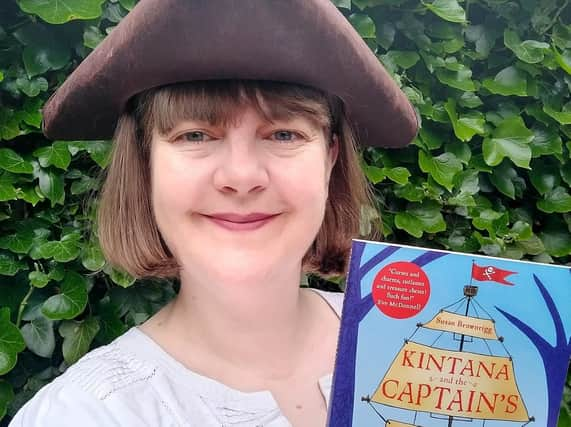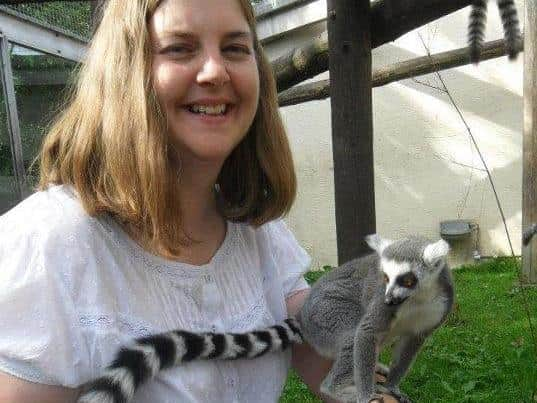Wigan author writes globe-trotting pirate-themed adventure book for children


Susan Brownrigg is taking bookworms off to 18th century Madagascar for her new book Kintana and the Captain’s Curse.
The book, which is written for eight-to-12-year olds, was inspired by Skelmersdale writer Susan’s love of pirates and the unique animals, including chameleons, fossas and lemurs, which are found in the African island country.


Advertisement
Hide AdAdvertisement
Hide AdSo when a tall ship, The Nine Sails, berths at Pirate Island she eagerly joins the motley crew as a cabin boy, even though her main duty will be to look after the pirate’s pets.
Someone on board, though, is determined to disrupt the voyage, with a captain’s curse or the lure or buried treasure among the possible causes.
The 46-year-old author, who was born in Platt Bridge, said she had a fantastic time immersing herself in the history of the days when ships flying the Jolly Roger sailed the waves as part of the book’s research, with a lot of the places in the adventure actually existing at one time in real life.
Susan, who lives in Tanhouse, said: “I have thoroughly enjoyed researching all about pirates. Kintana’s pa, Israel Hands, will be familiar to Treasure Island fans, but readers might not realise he was actually a real pirate who fought alongside the infamous Blackbeard.
Advertisement
Hide AdAdvertisement
Hide Ad“Madagascar is the perfect setting for a treasure hunt as Captain Kidd is believed to have buried his hoard somewhere on the island’s coast. “Nosy Boraha (Ile Sainte Marie) and Pirate Island were inhabited by pirates in the early 1700s and there is even a pirate graveyard complete with headstones featuring skulls and crossbones!”
Setting the book in Madagascar also enabled Susan to explore her love of the island’s astonishing and unique wildlife in print.
The book features animals on the island that are endangered as well as extinct species including the giant elephant bird, whose egg was a big as a human head.
She said: “Madagascar has so many unusual animals and plants that aren’t found anywhere else on earth. My book is a great introduction to the island’s flora and fauna.
Advertisement
Hide AdAdvertisement
Hide Ad“A few years ago, I worked for a summer season at Blackpool Zoo as an education assistant. I really enjoyed telling visiting children about the ring-tailed lemurs. They were very cheeky and would clamber over me when I was doing my talk holding a bucket of their food.
“I also loved helping children to carefully handle Madagascar giant hissing cockroaches. I know they are not everyone’s cup of tea, but I think they are brilliant.”
Susan’s favourite Madagascar animal is the aye-aye, a nocturnal lemur with big ears, rodent like teeth and a long middle finger that it uses to poke out grubs to eat.
She has recently delivered a series of virtual school visits telling key stage two pupils all about the island’s wildlife, including showing them replicas of an aye-aye hand and an elephant bird egg.
Advertisement
Hide AdAdvertisement
Hide AdFormer journalist Susan worked in heritage and wildlife education for over 10 years, but now has a job as a library information assistant.
The book is her second for children, following the publication of her debut novel Gracie Fairshaw and the Mysterious Guest in July 2020.
Kintana and the Captain’s Curse, by Susan Brownrigg, is published on Thursday July 1 and will be available from bookshops and online booksellers. Signed and dedicated copies are available online from Beyond Books.
Find out more about Susan’s writing at www.susanbrownrigg.com
If you value what we do and are able to support us, a digital subscription is just £1 for your first month. Try us today by clicking here and viewing our offers.
